Extended Review: Synergy Hybrid EFX3
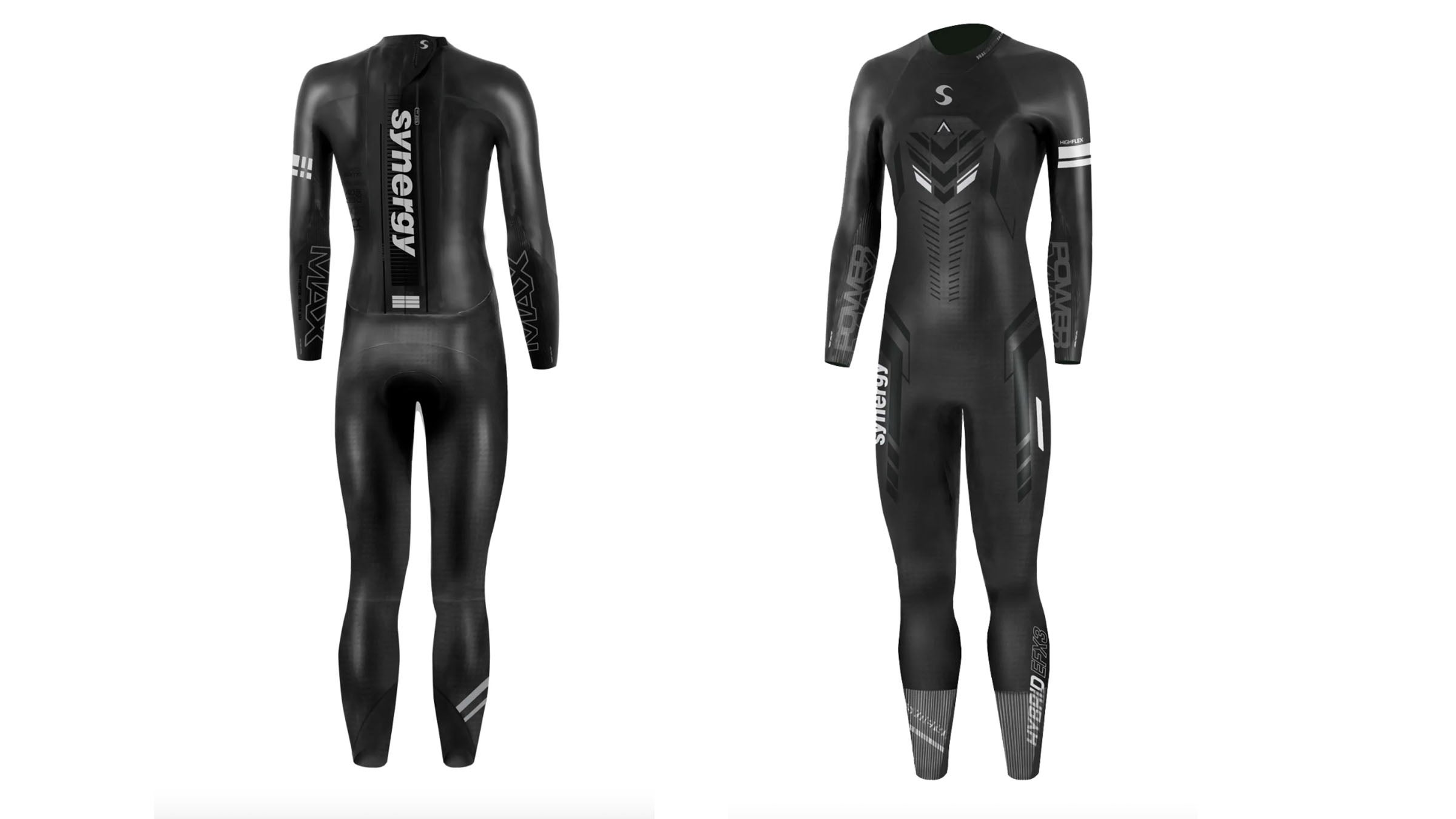
Table of Contents
Synergy isn’t necessarily a name you see on the biggest pros or in the splashiest ads (in fact, there are virtually no reviews online of the Synergy Hybrid EFX3)—but the wetsuit company is actually one of the largest sellers by quantity because of the huge volume they do on Amazon. While that means they often primarily target beginners with keywords and basic wetsuits that get the job done, the Synergy Hybrid EFX3 is their highest-end wetsuit and is actually a well-made smooth piece of neoprene that doesn’t just compete with the premium brands but is arguably faster (at least for our testers).
I know, I know, I was skeptical, too. But, once all the right pieces are in all the right places, the Synergy Hybrid EFX3 was highly buoyant through the core and flexible through the shoulders, without overdoing it on the legs.
Synergy Hybrid EFX3: The Basics
Let’s start with the basics. The Hybrid EFX3 is a top-end wetsuit for the competitive triathlete—i.e., someone who is neither an elite swimmer at the peak of the pointy end or a beginner who needs more support. Consider it on par with the Roka Maverick X2 or the Huub Pinnacle.
Synergy uses Japanese Yamamoto neoprene throughout its wetsuit, popular in many wetsuits (especially surfing ones) and considered more durable. If traditional neoprene is an issue for you, Yamamoto rubber is made from limestone—which can supposedly help with allergies. The biggest point, though, is that the rubber doesn’t absorb as much water as other neoprene, keeping it warmer (a pro and con—more on that below).
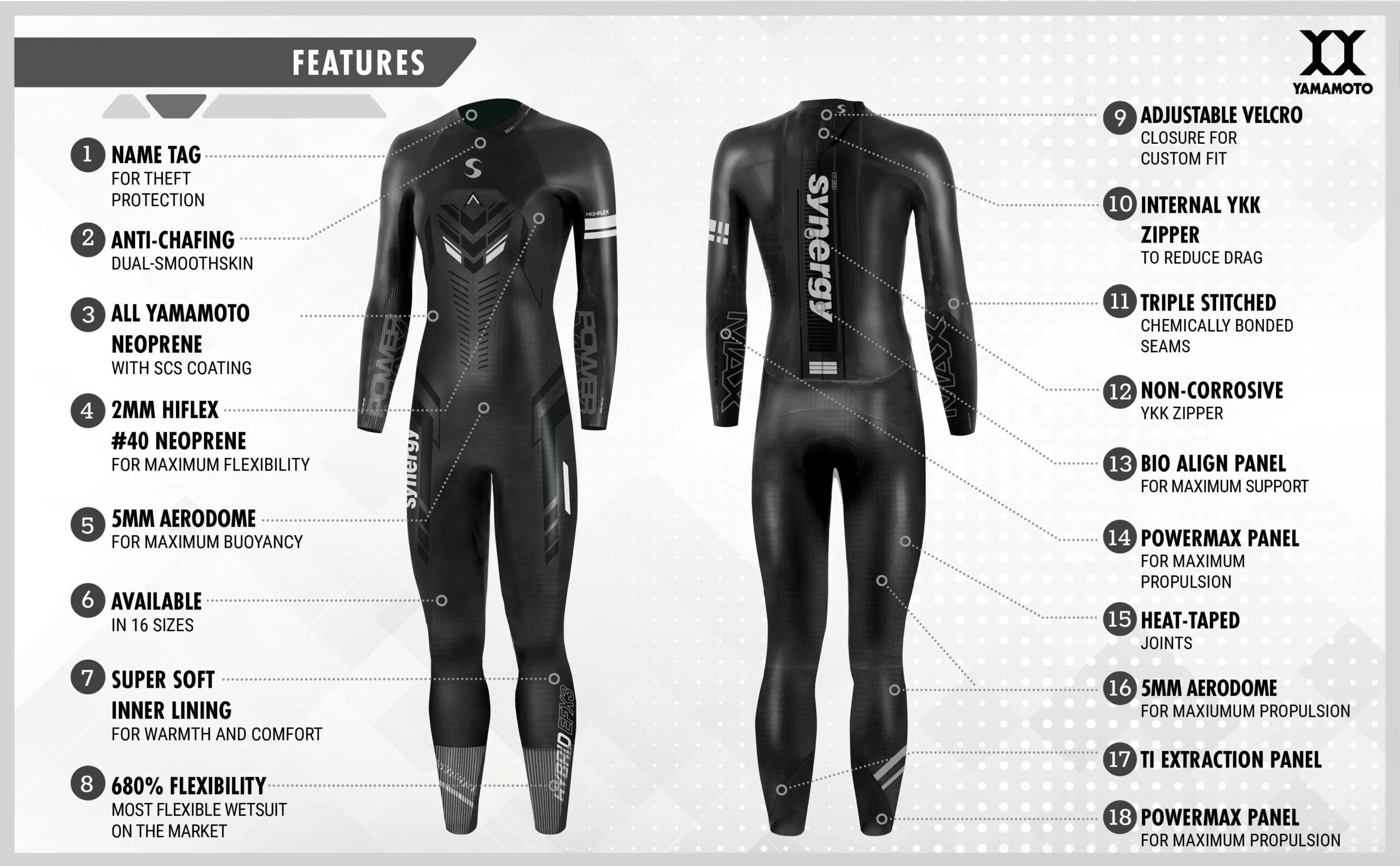
Of course, almost all brands either buy or make their own premium neoprene in their high-end wetsuits.
The Hybrid EFX3 uses a thick 5mm slightly dimpled neoprene through the center (which Synergy calls its aerodome), which extends through the top of the legs to just below the knee, with thin 2mm flexible and more supple neoprene through the arms and shoulders. Notably, there are also “powermax” panels of thinner corrugated neoprene on the shins and forearms—similar to panels on other brands’ suits that are supposed to catch the water and keep your position optimized. (For what it’s worth, it seemed to work for me, even though it looks slightly funny.)
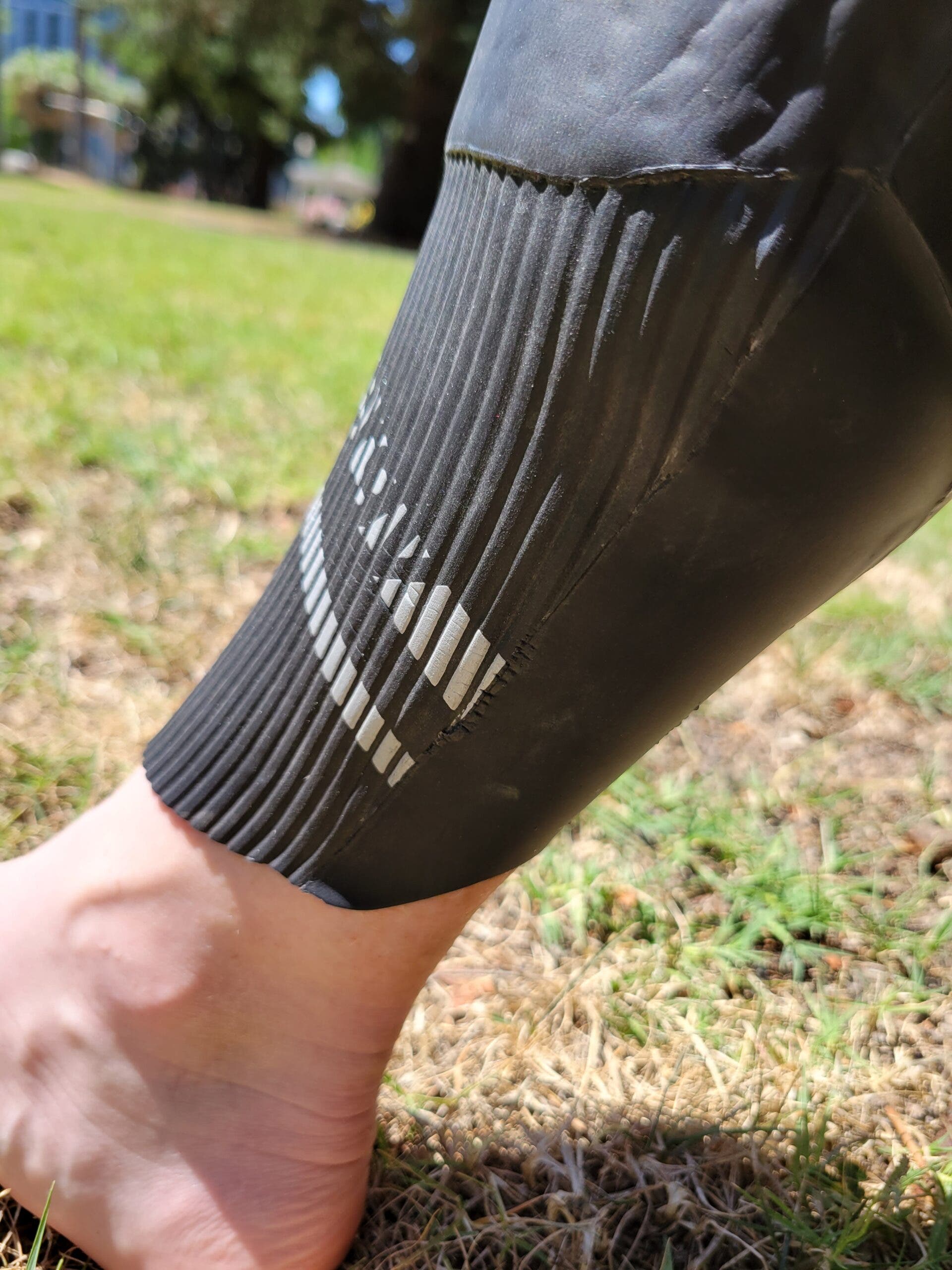
However, unlike other high-end wetsuits, the Synergy Hybrid EFX3 is a fairly simple suit. There is no arms-up design here or cross-seam taping or super fancy structure. It is simply panels of well-made neoprene, in different thicknesses, bonded smoothly together.
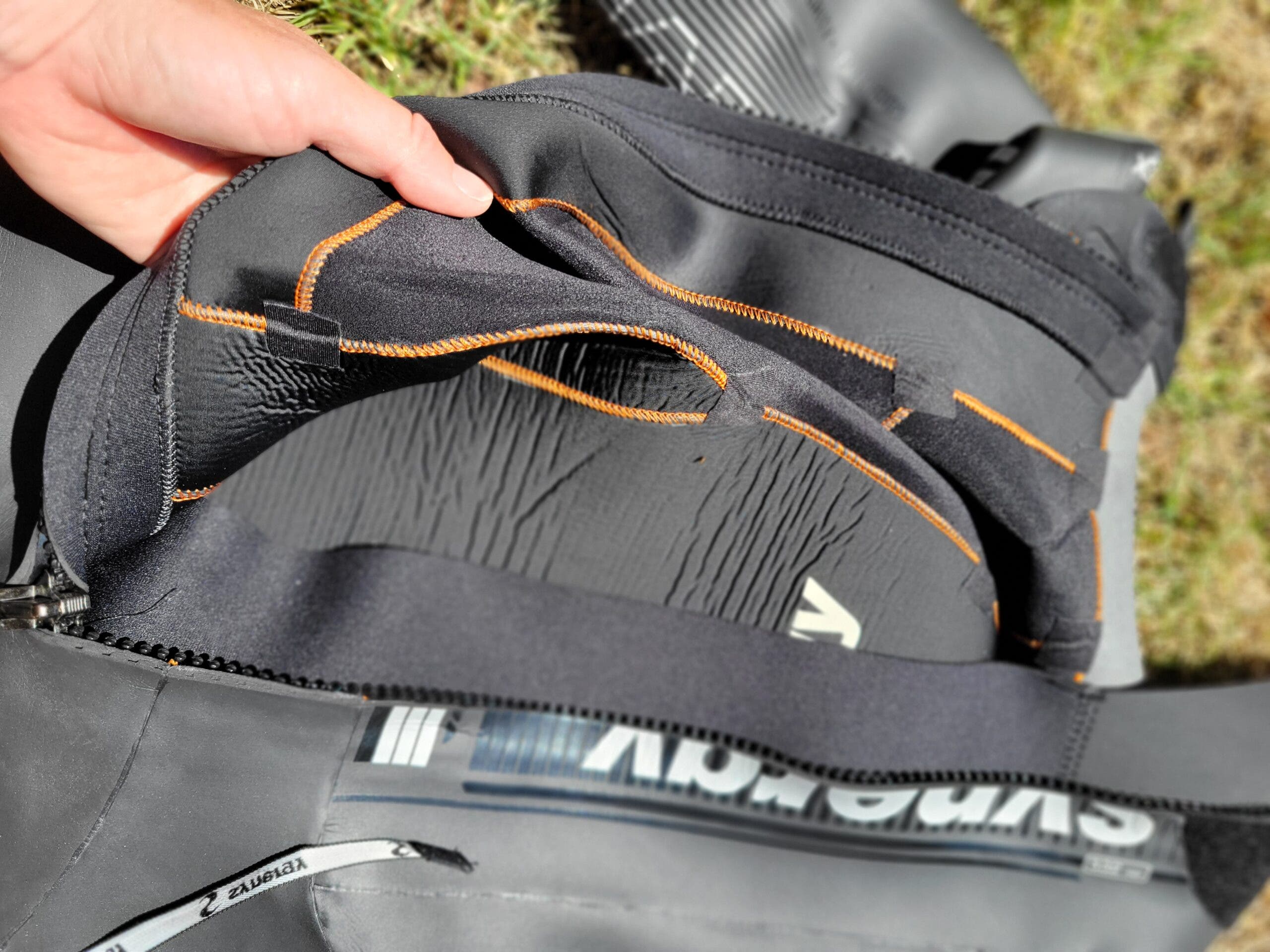
It comes in seven sizes for women and eight for men. At 5’2” and 125 pounds, I was arguably on the line between the small (P2) and small-medium (P3), and went with the P2—which fit exactly right. And that’s really what this suit is all about.
Synergy Hybrid EFX3: What Works
The Hybrid EFX3 is fast. At first, I wasn’t sure (maybe it just feels fast; maybe I just got faster?) and of course this comes with the caveat that every wetsuit is different for different swimmers, but I’ve worn this suit a half-dozen times, including in a race, and although my swim training is aggressively fine these days, I exited the swim near the front of the race and with an exceptional time for me.
Maybe equally importantly, it feels fast. There’s a fairly standard SCS coating on the neoprene, which is supposed to make any wetsuit hydrodynamic in the water, but the main difference for me was in the fit and the feel in the water.
It does take some time to pull fully on and it’s one of those wetsuits that you may need to get on, get in the water, and then adjust some more. (The shape and fit are designed to be optimized in the water, but not necessarily on land.) It’s also worth yanking up the arms more than typical, so that there’s almost extra room around the shoulders. When I didn’t get the arms and core fully pulled up, my shoulders did fatigue after 20 minutes or so, with a feeling that I was working against the neoprene pulling down. But when I worked the legs up so that the panels hit on my shins and finagled the core all the way up so that I had flexibility in the arms, it fit perfectly and moved with my body. The neoprene seemed to get even more supple and snug as I went.

I’ve swum in a lot of high-end wetsuits and often there’s just a little off about the fit. It’s fine, but it never feels like swimming in the pool, it typically doesn’t feel as easy and smooth as swimming without neoprene wrapped around you. The biggest selling point on the Hybrid EFX3 is that it feels just like regular swimming, but faster. Once on and swimming, I almost didn’t even think about the wetsuit (which says a lot): The core neoprene through the hips kept my body in the right alignment and position on top of the water with just a light kick, but without that feeling of too much buoyancy in the legs, and the arms caught the water well.
Synergy Hybrid EFX3: What’s Just Fine
Although Synergy claims to have dual smooth skin protection around the neck for anti-chafing, I have yet to swim in this suit chafe-free. In fact, in rough saltwater, I ended up with one of those painful rings around my neck for days after. The rough edge of the neckline, where the two layers of neoprene meet, appears to rub over time, particularly in conditions that require more aggressive sighting.
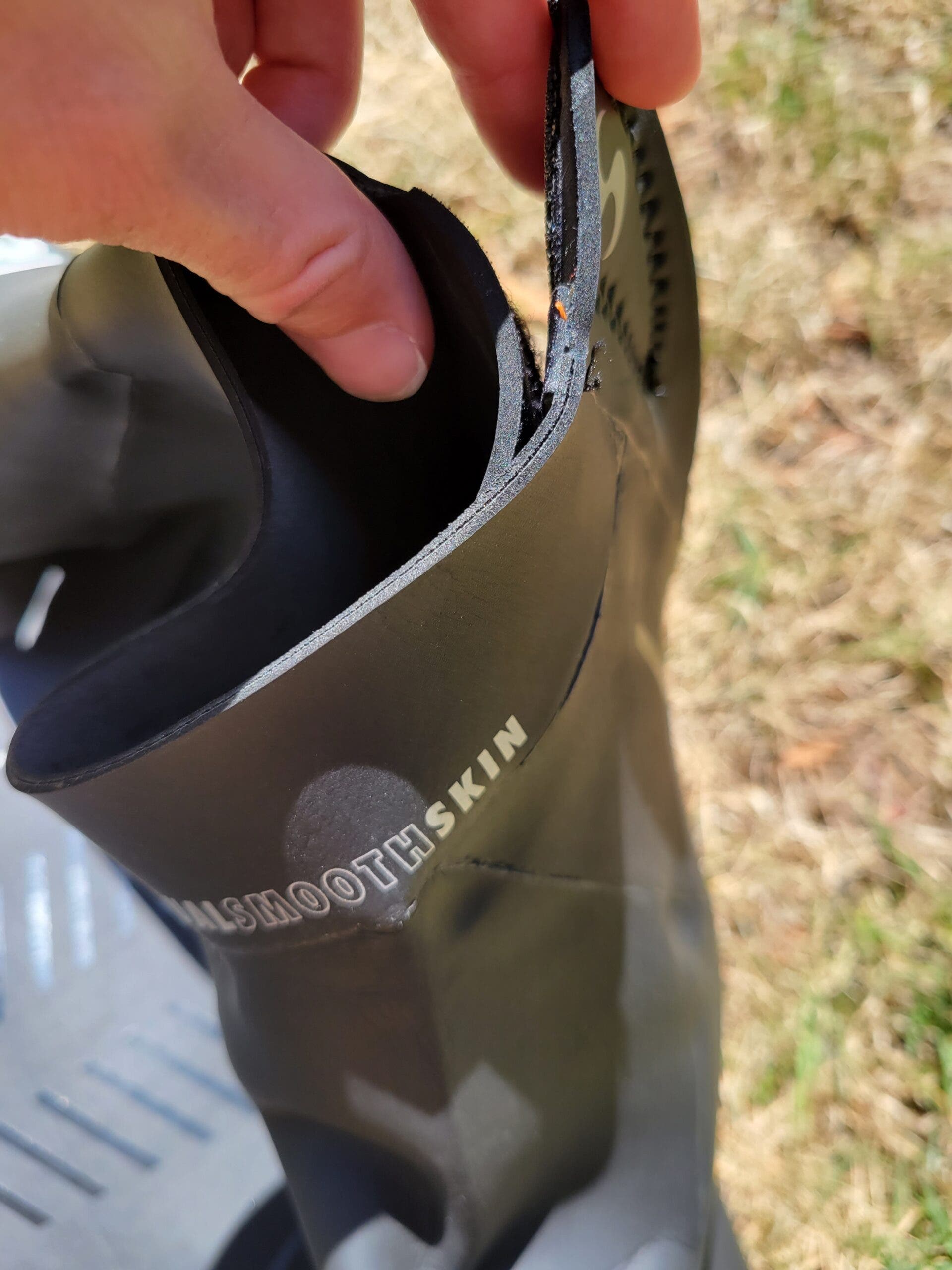
And while this may be nitpicky, it’s worth noting: Once you pull the zipper down, as you run through transition, it’s actually quite tough to get the velcro open. This is a plus and minus. It’s designed to stay close and lay flat, preventing the neck from opening or moving while you swim, but when it’s time to get the wetsuit off, this becomes a challenge if you want it to come off quickly!
The biggest issue, though, is the thick neoprene through the core actually makes the suit warmer than you’d expect for a performance triathlon wetsuit. While it’s notably not Synergy’s thermal wetsuit, swims in cold water (mid-50 degrees F) were not an issue—other than my hands and feet getting very cold—and swims in slightly warmer water (high-70 degrees F) left me feeling way too warm and potentially overheating in a longer race, which would offset any gains from swimming faster.
Conclusions
I don’t like open-water swimming. I’m probably not supposed to say that, but I think most triathletes will admit to similar feelings. The most notable thing that can be said about the Synergy Hybrid EFX3 is that it made me want to keep swimming—even in the San Francisco Bay, which is never a pleasant place to swim.
Wetsuits really are all about fit. We’ve said it before and we’ll say it again: Try on wetsuits and see what fits for you. Synergy claims the Hybrid EFX3 fits “like a glove” with their construction and neoprene. And, although the overheating issue may prevent me from racing in it too often (there’s nothing worse than hitting T1 too hot), the fit for an above-average swimmer with triathlon form seems to be just right.
RELATED: The Best Triathlon Wetsuits